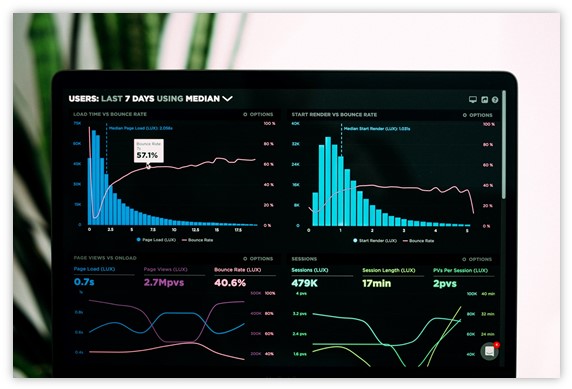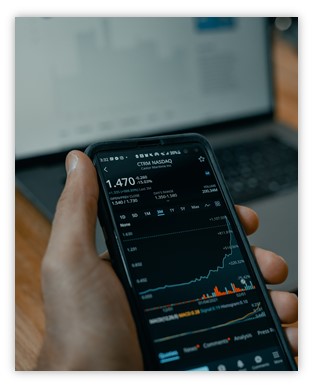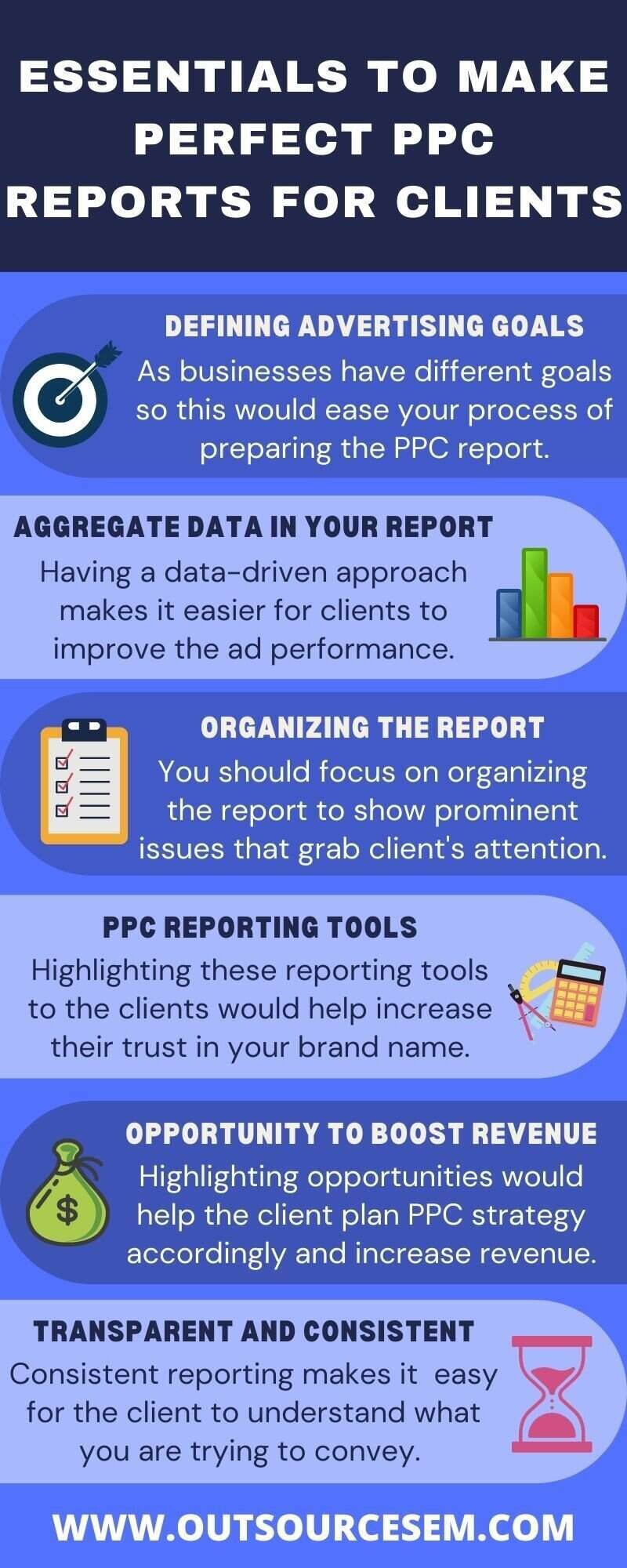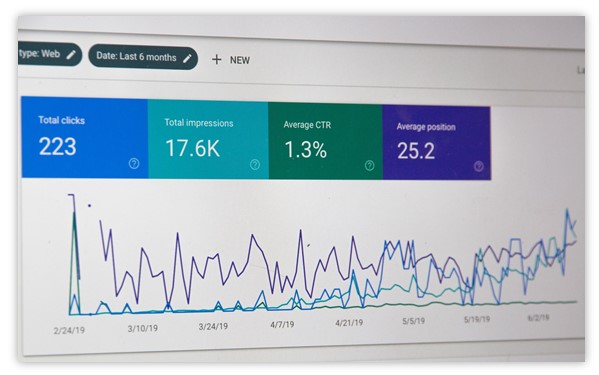PPC reporting can get complex and clumsy as different advertising campaigns have diverse goals. There can be a wide gap between what a client wants to know and what a PPC specialist provides. As most of the communication between you and your client is based on PPC reporting, it becomes essential to give your best in it. Regardless of which stage you are on, there is always a chance for improvement in preparing a white label PPC report for your client. You must consider presenting a report that highlights the ad campaign's performance based on competition analysis, market research, PPC trends, etc. You must drill down and provide valuable insights into various PPC metrics to give the client a detailed analysis of the ads. Moving forward, let’s explore how implementing the essentials discussed ahead would help increase the clients' trust and help you establish a stronger and longer relationship.
Metrics to focus on when preparing PPC report
1. Conversions - The most important goal of PPC advertising is to increase the number of conversions. The conversions can be different for businesses. Some focus on form fill-ups, lead generation, building brand awareness, generating revenue, increasing online sales, etc. Be it search engine optimization plan & strategy, search engine marketing, etc., all the marketing efforts in the online marketing world is done to increase the conversions.
As the online marketing world is different from traditional marketing, there are constant changes that keep happening. You need to keep your products or services in sync with the marketing trends, including PPC trends, SEO trends, e-commerce trends, etc. When you provide the products or services in the latest demand, users' trust in your brand increases. To keep the user's interest engaged, you need to lure them with offers, discounts, etc., so that they choose your brand for the relevant keywords or search terms entered.
When preparing a PPC report for your client, the main aspect you should highlight is how to increase the conversions. The better you explain to the clients about the present conversions and how you can improve them, the better the chance that they would outsource PPC services. Some of the points that you can focus on to improve the conversions for your Google Ads, Microsoft Ads, etc., are listed below.
a. Consider adding a pop-up to your landing page.
b. Adding reviews and ratings to increase users' trust.
c. Make navigation on the landing page easy. (SEO pagination strategy can also be implemented if the website is large).
d. Strengthen the call to action usage.
e. Add live chat to your landing page.
2. Click-through rate - The Click-through rate is the number of clicks that your ad receives divided by the total number of times your ad is shown. The click-through rate is essential to analyze how engaging users find your ad for the relevant keywords or search terms entered. When preparing PPC reports for your client, the click-through rate is essential as it helps to understand your customers. It helps you know whether your advertising efforts yield the desired results or not. A low CTR indicates that the target audience reaching the landing page has very few chances of taking the intended action. In another sense, it shows that you are targeting the wrong audience.
The Click-through rate is essential to analyze the ad rank & position of your PPC ads. When users enter a search term or keyword for the products and services they are looking for, multiple results appear on the search engine. Whether it is Google Ads or Microsoft Bing Ads, you focus on getting a high ad rank so that you have a higher click-through rate. Even in your social media marketing strategy, as you focus on running Facebook Ads, LinkedIn Ads, YouTube Ads, etc., many relevant users come across your ads. The more clicks that your ad campaigns receive, it shows that your social media marketing is working very fine.
Though there is no such parameter that defines a good CTR as compared to a quality score. A quality score ranges between 1 to 10. A better quality score indicates that your ad campaigns are performing well. However, the average click-through rate in Google Ads is 1.91% for search ads and 0.35% for display ads. It is commonly used to measure the effectiveness of ad campaigns, email marketing campaigns, the performance of ad titles and headlines, etc. Whether it is search engine optimization that involves Google SEO or Bing SEO, you need to focus on increasing the click-through rate to increase the conversion rate, increase online sales, etc. Some of the points that you can focus on to improve the click-through rate when preparing a PPC report for your clients are mentioned below.
a. Improving the quality score.
b. Focus on improving the ad relevancy.
c. Use quality ad extension and avoid generic phrases.
d. Use smarter bidding strategies.
e. Writing great content.
f. Use remarketing strategy to increase traffic.

3. Conversion rate - Conversion rate is the number of visitors that take the intended action on the landing page to the total number of visitors that reached the page. Every business website focuses on improving the conversion rate to get more and more users associated with the brand. As this is the era of online marketing and ad campaigns are running on social media platforms, you need to focus on improving the conversion rate. This happens as social media is the platform for like-minded people as Facebook is the place for friends & family, LinkedIn is used by c-level executives, etc. So, when the users are satisfied with the products or services you offer, they are more likely to promote it to their near & dear ones, thus helping in peer-to-peer marketing.
Whether you are running Google Ads, Bing Ads, e-commerce PPC ads, etc., the ultimate goal is to improve the conversion rate. As in the search engine optimization strategy, you focus on optimizing images, including short engaging videos, etc., on luring the visitors to the website and increase organic traffic; similarly, you need to write great content, ad description, ad title, eye-catching meta description, etc. to increase the conversion rate. Some of the points that you can consider in your PPC reporting strategy for clients are listed below.
a. Optimize your ads for mobile devices.
b. As your focus on local SEO, in the same way, focus on running local service ads.
c. Perform conversion tracking.
d. Prepare the search term report.
e. Perform a/b testing.
f. Use remarketing.
g. Focus on ad placement and ad group.
h. Use display ads on the Google Display Network.

4. Cost per conversion - In the world of paid advertising, where you need to pay an amount to the search engines for every click made on your PPC ads, a crucial PPC metric to focus on is the cost per conversion. The cost per conversion helps in identifying how much it actually costs to acquire a customer that completes the intended action. A conversion could be anything like making a purchase, signing up a form, watching ad videos, generating leads, etc. So, the cost per conversion varies from industry to industry.
For instance, say you own an e-commerce website and run ad campaigns to build brand awareness to lure visitors into taking the intended action. In that case, you may work on designing your ad campaign that best suits the users’ intent so that they end up making a click. CPC is a crucial metric that highlights how your PPC plan & strategy is performing. There may be multiple ad campaigns running simultaneously, like shopping ads, video ads, text ads, etc. So, the cost per conversion may differ for different ad formats depending upon the target goal. The formula for cost per conversion is the total cost incurred divided by the number of conversions. Some of the essential points that you can focus on to reduce the cost per conversion for your PPC ads are given below.
a. Conduct keyword research to choose the high traffic relevant keywords.
b. Highlight the low-performing keywords.
c. Optimize the landing pages so that the interest of the user is engaged.
d. Use eye-catching ad copy and write a great ad description.
e. Using the negative keywords in your bidding strategy to avoid the ad budget from draining.
5. Impression share - When preparing a basic PPC report for your clients, another essential PPC KPI to focus on is impression share. Impression share is the number of times that the users view your ads to the number of times that your ads were eligible to be viewed. When you offer white label PPC solutions to the clients, you work on performing a PPC audit to highlight the PPC metrics that need to be optimized and show the ones that are performing well as per the desired business goals.
Getting an ideal impression share is undoubtedly a tough nut to crack for any business. However, it depends on the target goals, targeted keywords, branded v non-branded keywords, etc. With the use of the keyword planner tool, you can conduct keyword research, e-commerce keyword research, etc., that helps you to get the best impression share for your ad campaigns. You can well highlight this PPC metric when preparing a PPC report for your clients so that the impression share increases. This helps the client know which areas need to be analyzed to improve the ad campaign's performance. So, the client then focuses on improving the user experience and increasing the trust of the visitors so that the users give a positive rating & review to your business. The better reviews you have, the better are the chances that search engine finds your ads and improves the ad ranking. It increases your ad visibility, ultimately increasing the impression share and improving the PPC conversion rate. Some of the points that you can focus on to improve the impression share are listed below.
a. Improving the buyer’s journey.
b. Work on bid adjustment.
c. Avoid any ad fatigue by highlighting the data from the PPC audit.
d. Focus on ad quality.
e. Including keyword match types.
f. Use better ad placements.
g. Include demographic targeting in your advertising strategy.

Essentials to make perfect PPC reports

A. Defining advertising goals - When beginning to prepare a PPC report for your clients, the first point that you should consider asking the client is what are the advertising goals. As different businesses have different goals so, when you are aware of what the business really wants to get from advertising would ease your process of preparing the PPC report.
As a PPC specialist, you may consider analyzing the performance of various important PPC KPIs, but depending on the client's target, the important PPC metrics need to be in prime focus. Like usually, reports on cost per click, impression share, etc., are prepared, but the client may prioritize return on investment, return on ad spend (ROAS), etc. So, you need to realize what your clients are concerned with the most and then begin making the report.

B. Aggregate data in your report - Another important point to focus on when preparing a PPC report for your client is aggregate data. Whether you are running Google Ads or Bing Ads, it is beneficial to know the performance of your ad campaign in the form of data. Having a data-driven approach for PPC reports makes it easier for your clients to make the necessary changes to improve the ad performance and avoid working on guesses.
Not every keyword intends to drive conversions. Every keyword has different goals like form fill-up, lead generation, etc. As you prepare an attribution report in Google Analytics to determine where traffic comes from to your website, you need to know the different platforms that drive traffic to your landing page. So, you need to present the report details in the form of data and focus on dividing it into graphs, charts, etc.

C. Organizing the report - The next important point to focus on in preparing a white label PPC report for your client is to focus on organizing the report. Suppose you have prepared a detailed report and highlighted the pros and cons, but it is not easy to understand. The client finds the report quite messed up and is not able to determine the points that matter the most. In such a case, the chances of retaining the client’s trust in your brand become very gloomy. So, to make the client easily understand the report, you should focus on organizing the report.
You should focus on highlighting the key points with bold colors. You can also give suggestions to your client about making the changes in ad copy, ad headline, ad description, etc. But these points cannot be mentioned at the top of the report. The clients generally go through every detail of the report prepared, so you need to focus on organizing the report to show the prominent issues that grab the client's attention that the report is well prepared and keep the client engaged with your brand.

D. PPC reporting tools - The next important point that you need to focus on is highlighting the PPC tools when preparing the white label PPC report. You may be using various PPC tools in preparing the PPC report, and highlighting these reporting tools to the clients would help increase their trust in your brand name.
As you have various SEO tools that you use to analyze whether the content is duplicate, the website's ranking on the SERPs, keyword search volume, etc. similarly, you need to inform the client about the PPC tools you are using. To analyze the performance of various PPC metrics, you may be using Google Analytics which highlights how the metrics are performing. So, when you inform the client that you have used Google Analytics to know the performance, the client feels that the outsourced PPC company highlights all the essentials in reporting. They get to know that the outsourced company is trustworthy and provides a complete white label PPC solution.
E. Highlighting opportunities to increase revenue - When you focus on preparing the PPC report for your clients, some PPC KPIs may be performing well while others need to be optimized. So, to improve the PPC conversion rate and ensure that you receive more clicks on PPC ads, you need to highlight the areas that have room for improvement. These may be like ad placement is not done well, ad space is not fully utilized, etc. So, highlighting these opportunities would help the client plan their PPC strategy accordingly, thus increasing revenue generation.
.jpg)
F. Stay transparent and consistent - The next essential point that you need to focus on when preparing a PPC report for your client is being transparent and staying consistent. As a PPC analyst, you need to clearly understand what the client is looking for when analyzing the performance of various PPC KPIs. So, to keep the client's trust engaged with your brand to get more reports in the future and avoid looking for other outsourcing opportunities related to PPC advertising, you need to be impartial and share the correct data with the client. This requires you to be very consistent and transparent and clearly highlight the shortfalls that occur in the report so that the next time when the ad is live, after making changes in the ads editor, better results are seen.
Sharing the accurate results and stats in each report allows you to build trust with your client and provides an opportunity for open conversation about what is working and what is not. Moreover, having a consistent reporting format makes it crystal clear and easy for the client to understand what you are trying to convey. It also increases the expectations of the clients with your report and you can clearly highlight the PPC metrics that need to be optimized. You can consider preparing the report weekly, quarterly or monthly basis.
Types of report that can be prepared for clients
A. Location report - When you prepare a white label PPC report for your clients, the first report you can prepare is the location report. When you are running ad campaigns for different locations, you would see different data for every location. As every location has different performing keywords, so you need to prepare the report accordingly, highlighting the locations that drive more conversions.

B. Hour of day report - Another essential report that you can prepare for your clients is the hour of the day report. As the ad campaign is live 24/7, so the users have the opportunity to get in touch with your ads any time that they wish to. However, when preparing a white label PPC report, you can highlight the area that shows the hour of the day driving the most traffic. Every day there must be some hour of the day that drives most of the traffic and the users could visit the ad during this hour from various sources. So, highlighting this to your client would inform them to be more active during this hour and they can work on ad scheduling to drive more traffic.

C. Day of week report - The next essential point that you can prepare a report on is the day of the week report. There may be ads that perform best during a particular day of the week. So, when you prepare the day of the week report for your clients, they get to know what needs to be done to make it perform better on other days. These days can be particular holidays, weekends, etc. So, the client can consider offering discounts & offers so that the visitors' chance of clicking on the ad on these days increases.
D. Brand & non-brand report - The next important report is the brand & non-brand report. As you conduct keyword research in the keyword planner tool, you need to focus on choosing keywords with high search volume. You can highlight the branded and non-branded keywords so that the client is informed of what types of keywords best suit the client’s business. You should also consider highlighting negative keywords so that the client is informed about the search terms that the ad should not be displayed to avoid irrelevant clicks and save the ad budget from getting wasted.
E. Ads report - The ads report helps the client to know which ad campaign best drives the business goals. There may be multiple ads running at a given time like text ads, video ads, responsive ads, display ads, etc. So, you need to inform the client which of the ad is performing well to achieve the desired business goals.
F. Device report - With the increase in technological advancement and the users being more impatient in this era, you need to highlight the device report. The client should know which device drives more traffic, desktop or mobile. This would help the client optimize the ad for mobile devices, work on accelerated mobile pages, improve page speed, etc. so that none of the target audience is untouched.
Wrap up
Having discussed ahead of the essential PPC metrics that you need to focus on while creating a PPC report for your clients, you must have got an idea of how reporting for your client varies in contrast to reporting done for your ad campaigns. When you create a PPC report for clients, the main focus is to improve the PPC conversion rate. The better the conversion rate of your PPC ads, the better the advertising return on investment.
You should focus on creating an open and honest space between you and your client so that when you highlight even a minute issue, the client easily identifies it. To get the best PPC reporting for your ad campaigns, you can get in touch with a digital marketing company. The PPC experts have mastery in managing PPC reports, performing PPC audits, white-label local services ads, reputation management, market research, competition analysis, etc. Avail the white label PPC reporting services today and see a drastic increase in your advertising goals. We specialize in driving exceptional results and ROI for home service businesses like yours through targeted PPC advertising including painting PPC, plumbing PPC, construction PPC, appliance repair PPC and HVAC PPC. Our skilled team delivers top-tier campaigns tailored to the unique needs of painting, plumbing, construction, appliance repair, and HVAC industries.
References
• 9 Essentials to Make Perfect PPC Reports for Your Clients
• PPC reporting guide: how to learn, inform, & impress with your data
